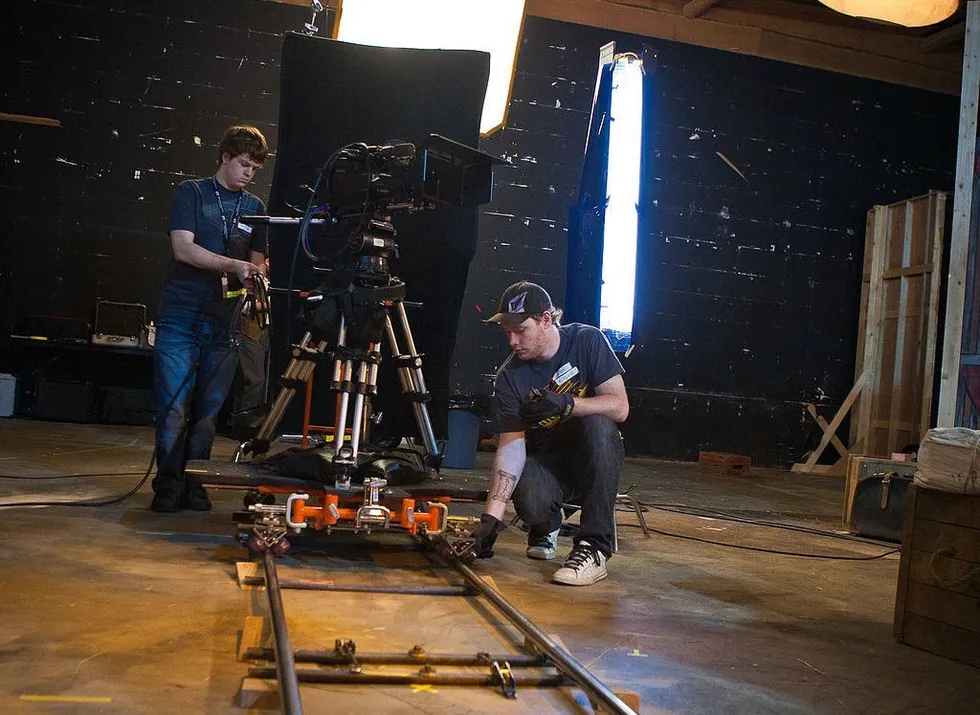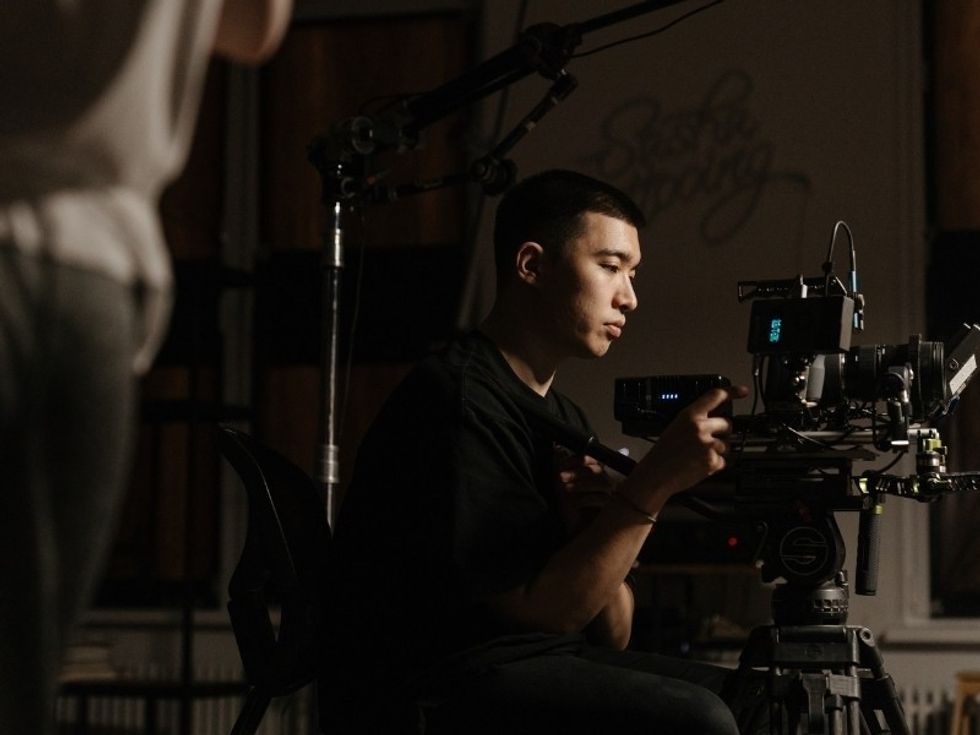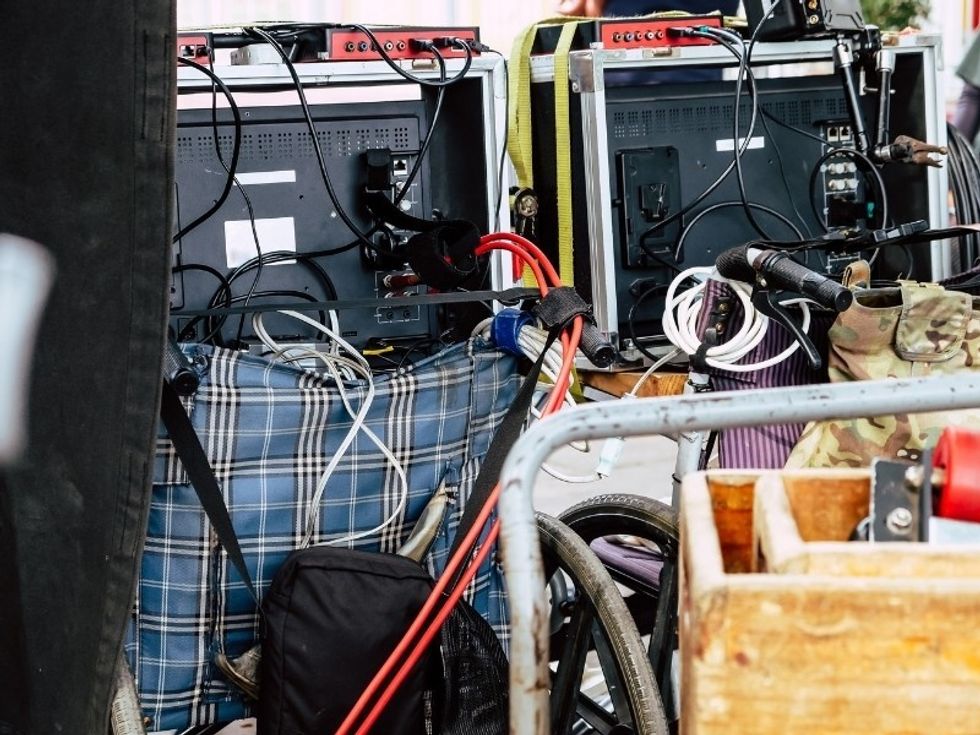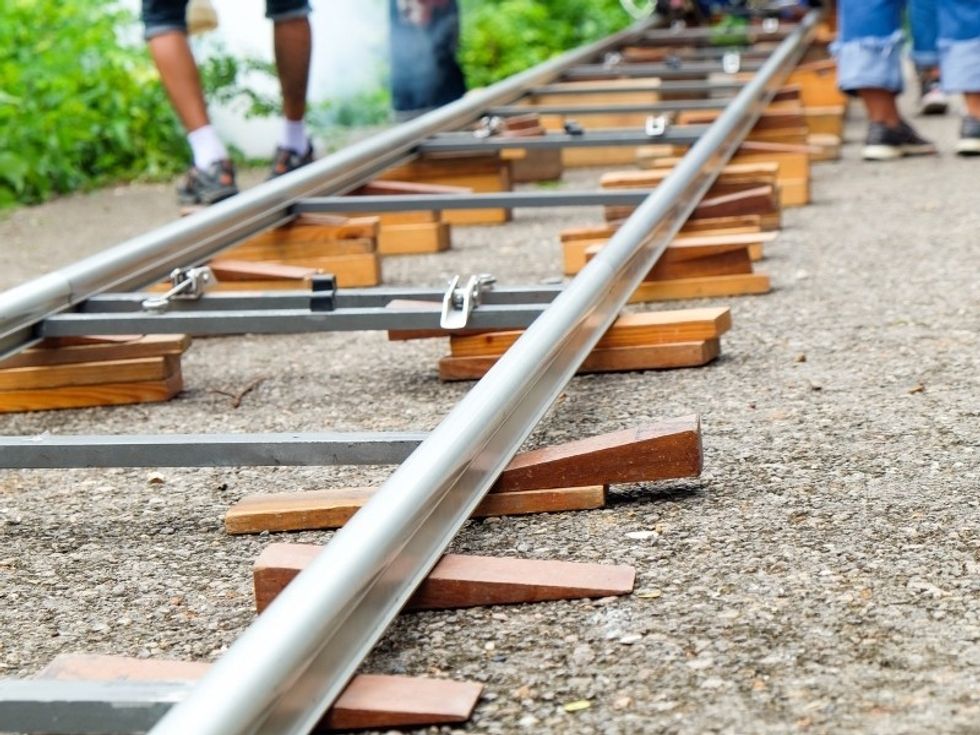What's a Key Grip in Movies and What Does a Key Grip Do?
Let's talk about the key grip job and go over what a grip is on a movie set!
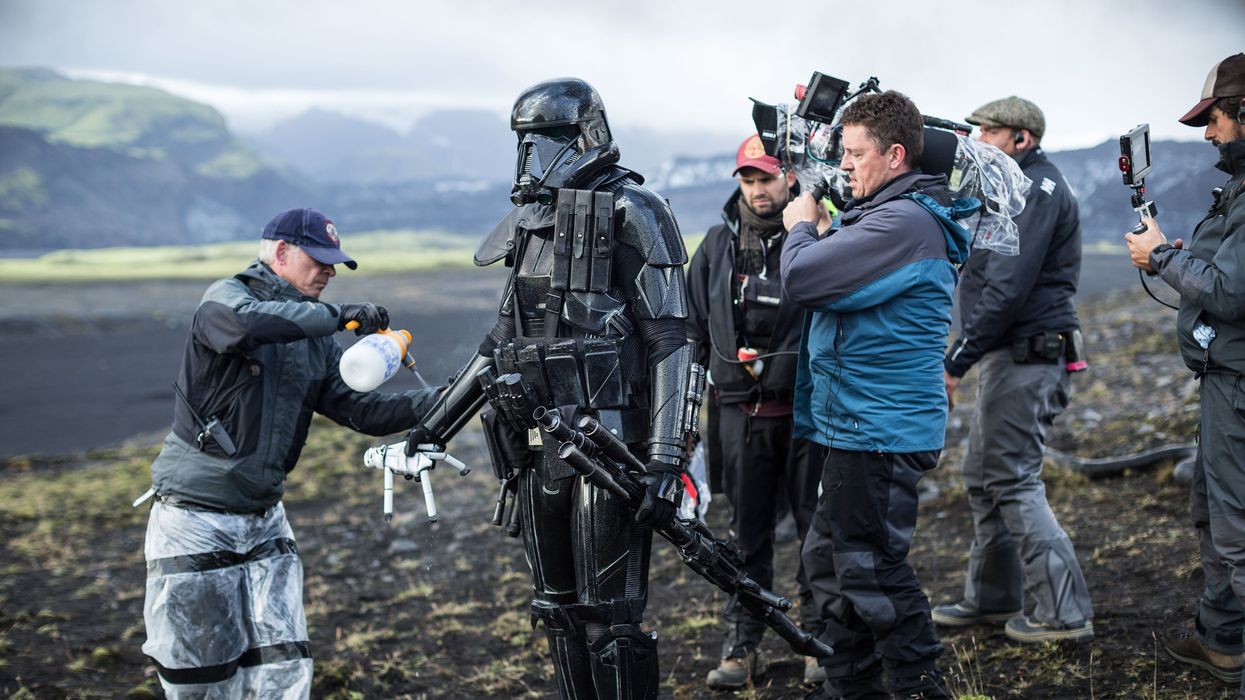
As part of our mission here at No Film School, we want to make sure everyone is educated as to the jobs they could have within the industry. Plus, if you stay for the credits to a movie, you want to be able to tell your friends what every title on the crew means. It makes you look cool. Trust us.
Today we're going to be covering the job of key grip.
It's one that's very important for the look and feel of the movie and one that we think will be interesting to discuss. So sit back as we explore the key grip on a movie set, compare them to the best boy, and dig into what it means to be a movie grip.
Let's get started.
Table of Contents
What is a Key Grip in Movies and What Does a Key Grip Do?
When talking about film and TV crews, the key grip refers to the person who works with the gaffer and the cinematographer to supervise lighting, rigging, and the entire grip crew.
But let's dig deeper into that grip meaning.
Grip definition
Grips are technicians who build and maintain all the equipment that supports cameras. They are led by the key grip.
Grip job expectations
Grips run and maintain all the equipment on set that has to do with the camera department.
That includes tripods, dollies, tracks, jibs, cranes, and pretty much all rigs. Let's say you want to hang a camera off a car or set up a GoPro attached to someone running. The grips build all of that.
They have to be able to be both delicate and firm when it comes to their engineering. They're handling the most expensive equipment and need to know how it operates and moves in order to get the cinematographer the look they want.
Grips department
The key grip leads an entire department of workers. They work in tandem with the camera department to support them and the cinematographer in their endeavors.
If the camera needs to be mounted on a jib, crane, ladder, or any other random position, they chat back and forth to make sure it's possible and safe.
All this is located on the grip truck.
What's a grip truck?
There are lots of vehicles on a film set, but the grip truck is the easiest to spot. Aside from craft services, the grip truck usually has the most people around it. It's a well-stocked truck with every large tool and small gadget you need to tackle a variety of on-set tasks and technical needs.
When you are hiring a key grip, they'll usually have connections to places they rent trucks from.
The larger the truck, the more equipment it has inside. Most professional rental houses offer 3, 5, and 10-ton versions of grip truck rentals as well as a 1-ton van package for smaller shoots. But you should have your own toolbelt for the small things you use every day.
Tools needed in a grip job
If you want to be a grip, you need a toolbelt at the ready. So what goes into a grip kit?
- A monkey wrench
- Several different types of pliers
- A long measuring tape
- A foot level
- A stud finder
- Duct tape
- Gerber Suspension Multi-Plier
- Speed Wrench
- Knife
- Screwdriver set
That's a generic list, but one of the most important tools a key grip needs to carry on the set is a C-Wrench. It makes the process of rigging much easier and helps you in carrying out certain tasks much faster.
You also want to have a spot for your walkie talkie as well.
Key grip definition
As I mentioned, the key grip is the person in charge of the entire grip department.
They are the ones who get direct orders from the cinematographer and who oversee the building and rigging. It's an incredibly important department, so the key grip needs to be an excellent leader.
What does a key grip do?
The key grip is a department head, so they are sent a copy of the script early on. They will participate in the camera meetings and sometimes be involved when it comes to shot lists and storyboarding. Especially if there are complicated angles or things the director and cinematographer want to try.
After talking with the cinematographer, the key grip might sketch out some rigging ideas and collaborate with the other people in the department for ideas on how to get things done. Sometimes there are standard rigs, but in tough situations, you might be figuring out how to strap a RED to a camel or how to keep a rig from shaking as a Ferrari speeds around a racetrack.
Key grip job description
The responsibilities of key grips are to be excellent problem solvers, be very creative, and not frustrate easily. Tactical knowledge and communication skills also come in handy. They need to be able to talk to people in their team and also the director and cinematographer.
Across the world, there might be a different nuance to the position. For example, in the United Kingdom, the grips are a part of the camera group exclusively, while in New Zealand and Australia, the key grip owns the grip equipment, so you need them to bring everything to set and hire people based on what you need and what they offer.
How to become a key grip
The best way to move up on any set is to start out as a production assistant. After surveying the wide variety of jobs, if you want to be a key grip, try to become an assistant in the camera department, or see if the grips have their own dedicated production assistant, depending on the size of the movie.
After working as a generic grip for a while, you can advance within the union, and become ready for key grip positions.
Start small and work your way up to epics. Make friends with cinematographers and directors who can provide opportunities to work together in the future.
Key grip salary
According to Forbes Magazine, a best-boy grip can expect to make around $50,00 to $75,000 a year if they’re working regularly.
A key grip can expect to make between $60,000 to $100,000 a year if they are regularly working.
All grips are governed by IATSE, and on union shoots, may find themselves subject to union payment rules.
What are a key grip and best boy?
As you know, the key grip is the head of the grip department. Under him is the best boy.
There are two kinds of best boy: best boy electric and best boy grip. In short, the best boy acts as the foreman for the department.
The best boy grip assists the key grip. The best boy electrical assistants the gaffer.
What's a best boy grip?
The best boy is second-in-command and foreman of their respective grip crews. As an older term, the origin of "best boy" is explained in a couple of different ways.
Some say that in the early days of filmmaking, members of the grip and electrical departments would regularly go to each other and ask for help "from your best boy." That would usually be the second-in-command or best boy.
Others claim the name comes from sailing jargon or even the era of British apprenticeship.
Grip vs. Gaffer, or Gaffer vs. Grip
When I began writing this article, I met a little confusion here, so I wanted to clear up the roles.
The gaffer is the head electrician in a movie crew. It's their job to manage the lighting, making sure the levels are appropriate for the desired effect in the scene. The assistant to the gaffer is the best boy electric and an entire crew of electricians.
The grip is a different role. While they are also involved with lighting, they come at it from the mechanical side. Grips handle shading, filters, nets, flags, or other objects in front of lights, or setting up large frames or tents to block the sun. Grips are like a construction crew, responsible for the setup and stability of scaffolds, ladders, and other heavy objects. The head grip is called the key grip.
The gaffer and grip will often work in tandem, but they do different jobs.
Summing up the key grip position
If you want your cameras to hang at weird angles or just to have the dolly ready for a cool shot, you need a key grip on the job. A key grip might not be known by most people, but there's so much importance behind the job.
There's a lot of significance within their role on set. They help the director and cinematographer stay organized. If you are looking to find your way as a key grip in this industry, we want to hear from you.
Let us know other job duties and tools people should have in the comments.
Let's use this as a forum to teach others. And to salute our key grips!
What's next? Learn 13 Film Lighting Techniques!
Film lighting techniques make your commercial, movie, or TV show look cinematic. It will help your story pop off the screen. We break down every major technique.
